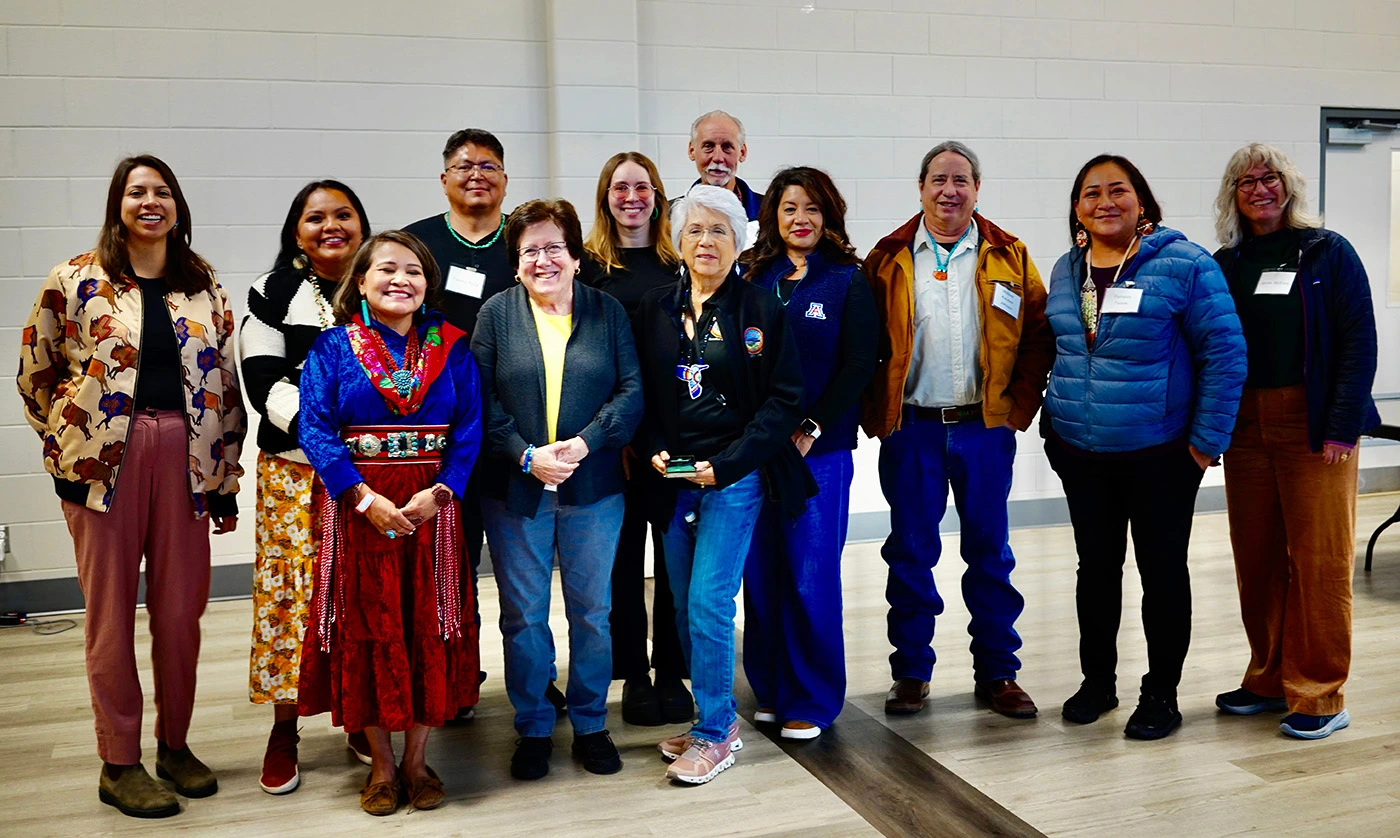
Members of the Colorado River Basin Delegation. From left: Mira Busch, Nikki Tulley, Karletta Chief, Tommy Rock, Sharon B. Megdal, Ruth Pannill, Chairwoman Amelia Flores, David DeJong, Christina Urbina Gargus, Michael Kotutwa Johnson, Ranalda Tsosie, Jamie McEvoy
Image: Jérôme Marty, Executive Director of the International Association for Great Lakes Research (IAGLR)
Last week, October 8–10, 2025, a delegation from the Colorado River Basin (CRB) traveled to Toronto, Ontario, Canada, to participate in a workshop on “Braiding Knowledges in Water & Land: Collaborative Adaptive Management.” WRRC Director Sharon B. Megdal and Dr. Karletta Chief (Diné), Director of the Indigenous Resilience Center at the U of A, were among the organizers of the workshop, which included representatives from the CRB, the Bay Delta region of California, Australia, and Canada.
Did You Know? La Paz County Water Facts
The primary source of water in La Paz County is surface water (87%), with groundwater making up the remaining supply (13%). Most surface water in La Paz County comes from the Colorado River and its tributaries. Colorado River water is managed by the US Bureau of Reclamation and the Arizona Department of Water Resources (ADWR) based on Colorado River entitlements.
Transboundary Collaboration Tackles Water Challenges in Ambos Nogales
On October 8, Elia Tapia, Associate in Extension at the WRRC, joined representatives from Santa Cruz County, the City of Nogales, the Arizona Department of Environmental Quality (ADEQ), and Arizona State University (ASU) at the Santa Cruz County Complex to review findings from three initiatives addressing water management and flooding challenges in Ambos Nogales.
U of A Scientists Use Tree Rings to Reconstruct Jet Stream History
A recent study led by U of A scientists developed new insights into the atmospheric forces that shape extreme summer weather by examining tree rings. In a study published in the journal AGU Advances, researchers used centuries of tree-ring records to reconstruct the history of jet stream patterns known as “locked” wave5 configurations, which can stall weather systems and trigger heat waves and drought across continents.

